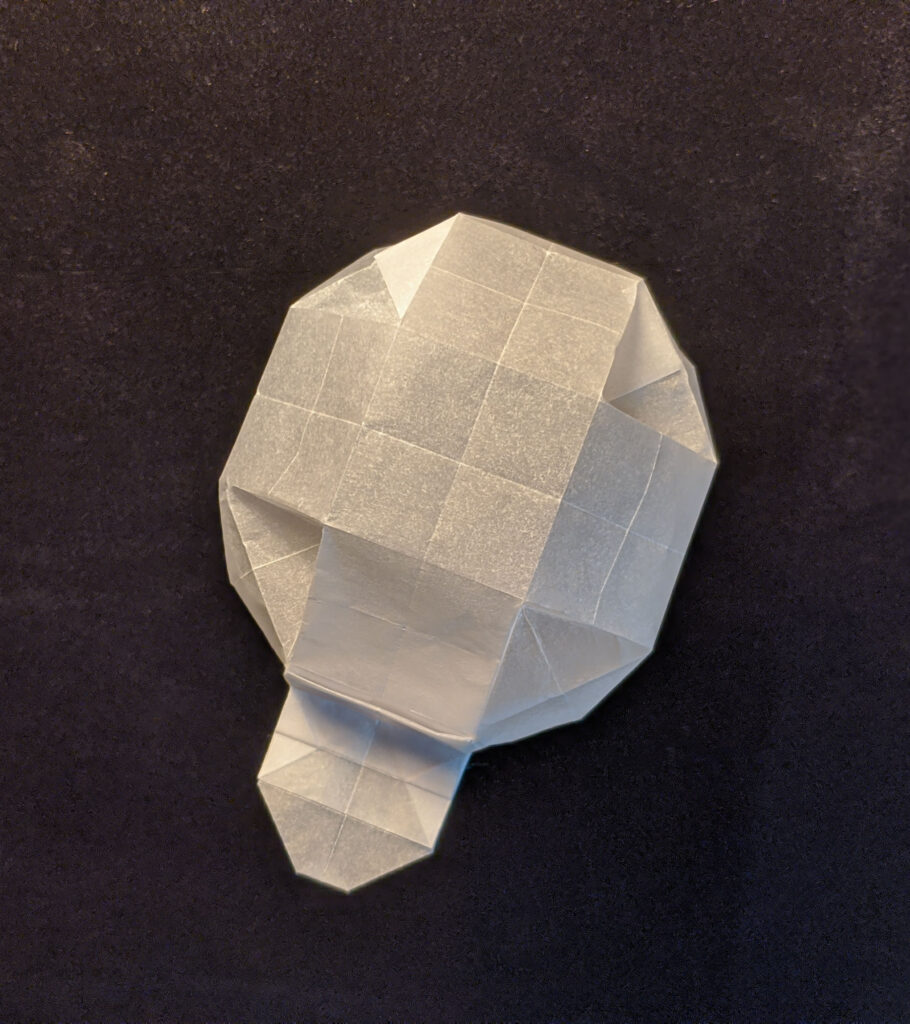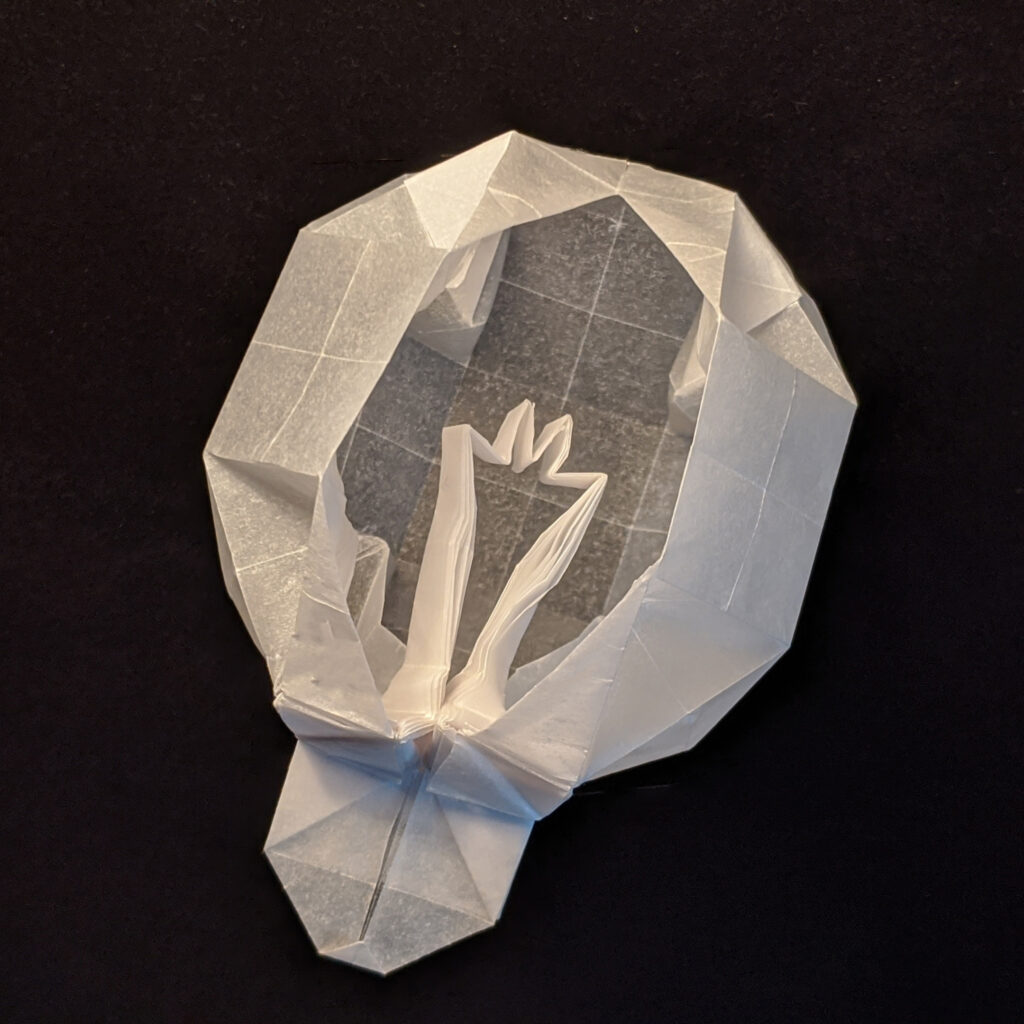Origami Lightbulb
designed folded by Tomoaki Hamanaka
2021
Tracing Paper
7.5cm×10cm×7.5cm
Light in Japanese Culture
In traditional Japanese lighting, the lantern (chōchin) embodies a simple elegance: paper encases a candle’s flickering flame, dispersing its soft light into the surroundings. Today, electric bulbs have replaced candles, yet the warmth of light filtered through paper evokes a nostalgic comfort.
In his iconic work In Praise of Shadows, Jun’ichirō Tanizaki captures the heart of Japanese aesthetics, admiring the delicate shadows cast by faint light on lacquerware or within a dimly lit Japanese room. Unlike the Western notion of full illumination, Tanizaki celebrates spaces where mystery thrives, finding beauty in the unseen. This perspective invites contemplation, heightening our awareness of what lies beyond the visible.
In today’s digital age, where every corner of the world seems accessible, preserving such “empty spaces” may seem challenging. However, nurturing an appreciation for the beauty in everyday subtleties opens new vistas. Each of us views reality through our subjective lenses, filtering information according to our perspectives. This selective perception, while efficient, can obscure the nuances of beauty if not regularly attuned.
There are many ways to tune one’s aesthetic sense — through art, philosophy, or even a change in fashion. For me, creating art offers the best form of calibration. By reflecting on each step — conceptualizing, experimenting, observing, and discerning value — I gain insight into what resonates as beautiful. In doing so, the world I see continuously transforms, revealing the potential for beauty in the previously unnoticed.
About Work
The “Origami Lightbulb” is one of my earliest works where I attempted to express something beyond mere shape using the art of origami. At first glance, this piece appears to be nothing more than a simple sphere. However, when illuminated from behind, the form of a filament inside becomes visible, simulating the structure of a real lightbulb.


Before creating this “lightbulb,” I believed that origami was solely about folding paper to mimic the shape of an object, akin to drawing a sketch. Through this piece, however, I realized that by focusing on paper as a medium, I could achieve expressions unique to this material, expanding the possibilities of origami as an art form.
The difference between crafting a lightbulb out of glass and doing so with paper is not just the difference in materials but also in what can be expressed. While glass is almost entirely transparent, paper is opaque. However, with sufficiently thin paper, light can shine through, allowing what’s behind to be seen. Utilizing this property, I translated the essence of a real lightbulb—one that reveals its nature only when illuminated in the dark—into the medium of paper.
.png)
